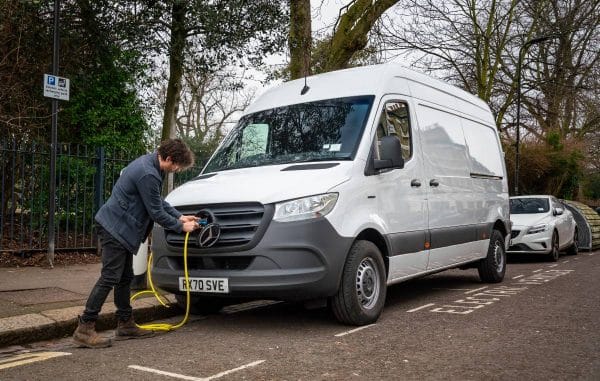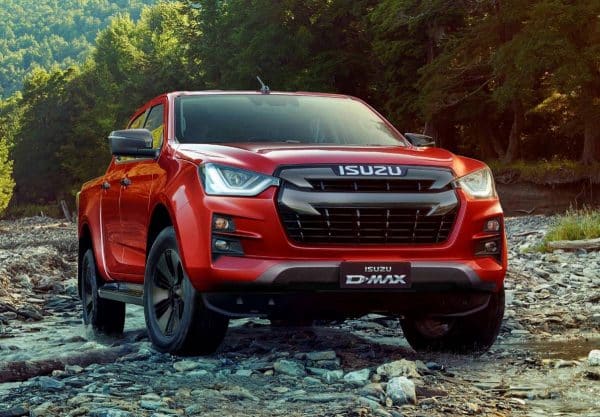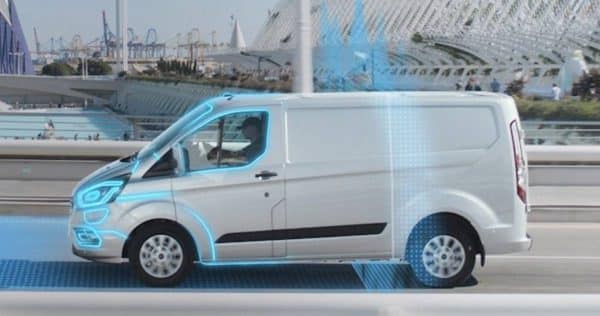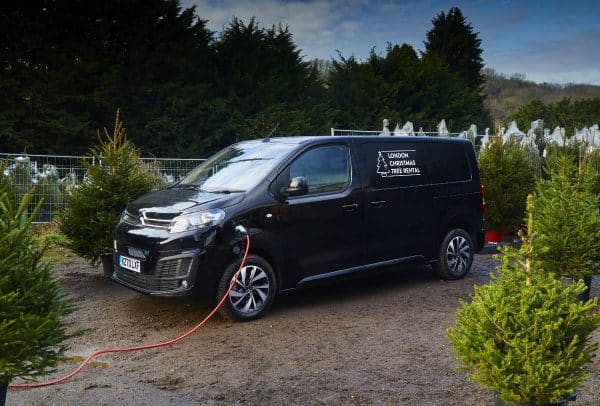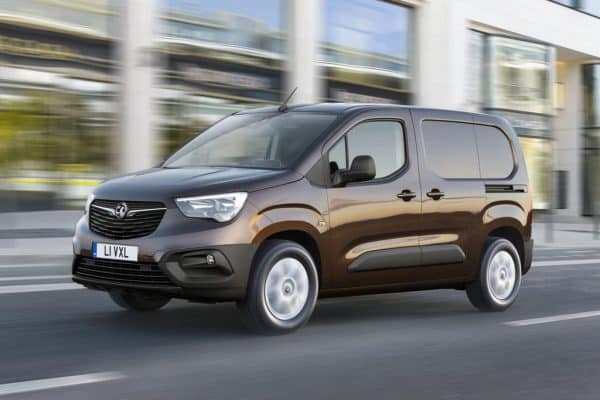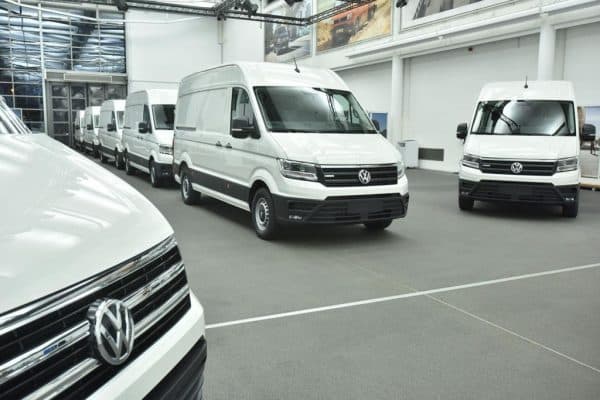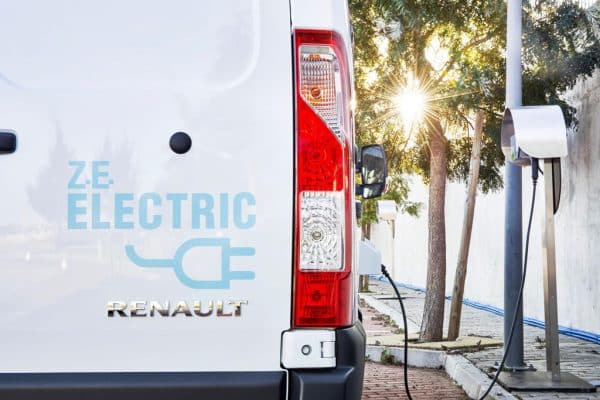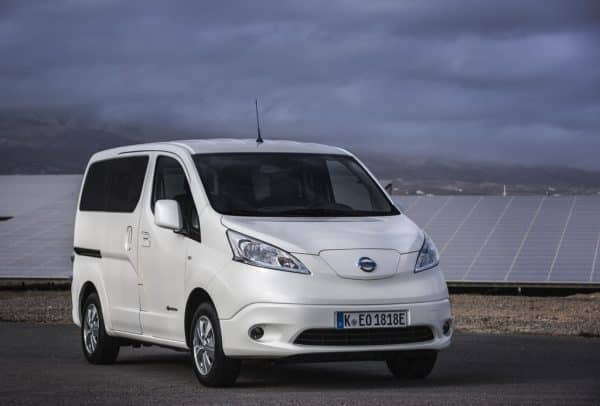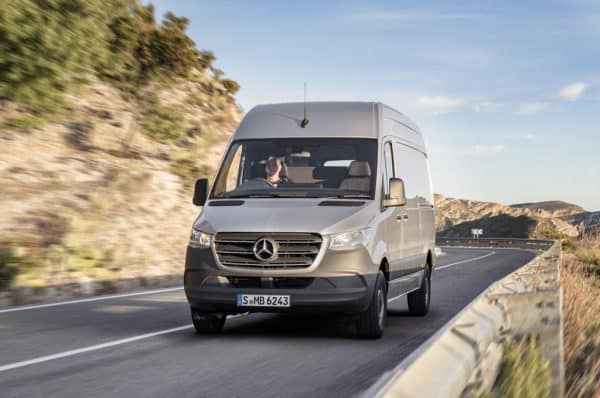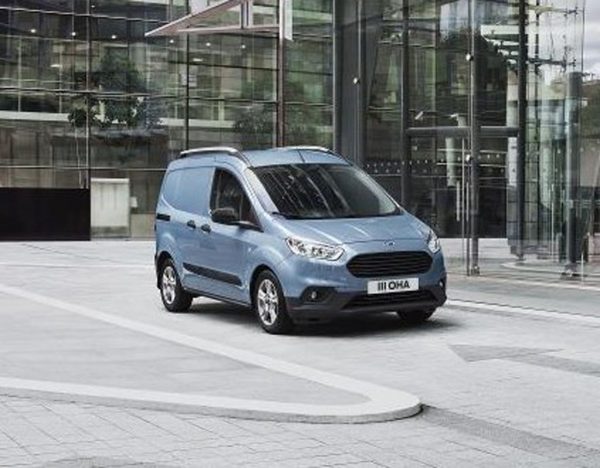The Mercedes eSprinter is a very good electric van, it is comfortable and smooth to drive and feels well planted. However, the payload capacity is just 1 tonne, and the battery range is just 93 miles. Having said that, this is a well-made van and for those who want a large vehicle, it is worth shortlisting.
Let’s face it, the Isuzu D-Max has always been a sound choice for those wanting a rugged pickup to meet a range of needs. The latest offering is still a reliable workhorse, and it adds improved driving dynamics and a more refined interior. There’s no doubt too that the levels of safety equipment are class-leading. The 2021 model is a big step up from the version it replaces and can still tow 3,500kg and has a payload of 1,000kg. Opt for the luxurious versions, and you’ll have a vehicle for business during the week and family life or adventures at weekends.
One of the big attractions for the Ford Transit Custom PHEV is that it is an ideal step for businesses or van drivers considering switching to an electric van – but without having the hefty price tag. This is a plug-in hybrid electric van with a small petrol engine and an electric motor so there’s the potential for zero-emissions driving but for short periods. The van has been extensively tested in the real world by Ford and it’s a clever and capable plug-in van worth considering.
The Citroen e-Dispatch is an eye-catching offering, particularly for the price, and for those firms wanting an electric van that is based on the same platform as a diesel-powered sibling, then the e-Dispatch should meet your needs. It’s well-equipped, nice to drive but be aware that the offset driving position can make longer journeys tiresome.
It’s already won the prestigious Van of the Year 2019 award (along with its stablemates the Peugeot Partner and Citroen Berlingo) so is the all-new Vauxhall combo worth the coveted title? The short answer is ‘Yes’ and the influence from the new Peugeot ownership makes this an impressive new offering compared to its predecessor. The Combo scored more points from the judges than the Mercedes Sprinter, which was in second place and is an excellent offering. If you’re in the market for light commercial vehicle then the Vauxhall Combo should be on your shortlist.
The Volkswagen e-Crafter is the polished and impressive product that takes the conventional sibling to new heights. It’s got the same level of comfort and quality, the great interior and lots of safety equipment. The impressive low running costs will impress and with the all-electric market growing quickly, the VW e-Crafter will find an enthusiastic market of buyers – though after its ‘official’ launch at the Commercial Vehicle Show it became apparent that the e-Crafter would not be reaching the UK in late 2018 as had been expected. And it might not be here in 2019 either. Read more to find out why.
The Renault Master ZE is certainly worth another look in a rapidly growing segment; while there will be fleet owners reluctant to take on board an electric vehicle, the Master ZE really does deliver. It also has one of the most comfortable cabins currently available and the all-round offering will impress. For those who are doing lots of drop-offs in towns and cities, the Master ZE will make economic sense and there’s no fear of running out of power before the day’s work is over. Our rating would have been five out of five but the issues over range means we have to give a lower rating.
The Nissan e-NV200 is the market leader for those wanting an all-electric van and their latest offering is very good indeed. It’s larger than its predecessor and has more range – but the competition is getting stiffer and the new e-NV200 might be found lacking (particularly when the Volkswagen e-Crafter is unveiled). Despite this there’s still a lot to like and it is a great van for delivering around town. Out on the open road, the e-NV200 isn’t as refined or as comfortable to drive when in towns and cities.
The new third generation of the Mercedes Sprinter has been hailed by the van maker as a ‘game changer’, and, for once, this might not be marketing talk! That’s because the new van has been completely re-engineered and improved. The engineers have had to sit down and think about what users are actually looking for and the end result is an impressive van that is designed to deliver. It’s nice to drive and it’s a good performer around town with a comfortable cabin. It’s also the first production vehicle to have a nine speed automatic gearbox which should help boost efficiencies. An all-electric Mercedes e-Sprinter is set to go into production in 2019 and until the new diesel engine van has improved fuel economy of around 45 mpg.
There’s also a new naming convention to appreciate so the Sprinter vans are no longer called the ‘Short’ to ‘Extra-Long’ and instead will be referred to as L1 to L4. The vehicle height will follow and these are H1 to H3. There’s also an impressive option list that features more than 600 items including suspension and fleet solutions so it can be adapted to personal requirements.
It might be the smallest member of the impressive Ford Transit line-up but the new Transit Courier offers more than a fresh look. There are improved engines on offer, a new transmission plus new engines with excellent low running costs. The cabin is also a great place to spend time after being revamped and the overall impression is of a small van that’s easy to drive and is responsive around town with a great carrying ability.
The new Transit Courier also marks the design that Ford will be introducing for all of its future Transit re-incarnations. Along with the Courier, the Connect has also been freshened-up for buyers as part of this redesign revolution. Since Ford is Europe’s number one bestseller for commercial vehicles, the firm is keen to keep ahead of its rivals and the Courier offers not just a stylish new design, but improved engines and driver assistance technology. The Courier, for those who need a small van, is highly recommended.


